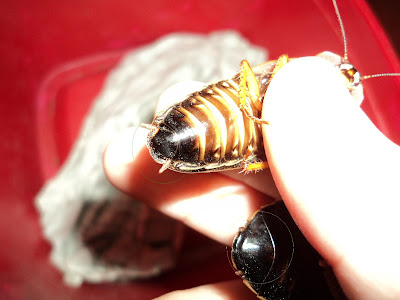Most of us doesn't like to see a cockroach, for some of us consider them as filthy and gross creatures. For some, they are pests and should be eradicated as soon as possible. You have probably seen one in your house and tried to kill it, but have just started screaming and running away while they crawl and fly towards you. You've been thinking of so many ways on how to kill and get rid of them. But did you know that there are also people who tried to breed and keep them? They are those amphibian and inverts' owners who breed and keep these dubia roaches.

Dubia roaches are one of the best and easiest feeder roaches to keep. They are slow moving roaches and doesn't fly at all. I said feeder because most people who keep and breed them are reptiles and or arachnids' owners. Dubia roaches are easy to feed and keep. I keep them in a storage box and provided them with food dish and egg trays as their hiding place. They are cockroaches and are still scavengers by nature, which means they will still eat almost anything. Usually , I give them cat food and oatmeal. Then, supply them with citrus fruits such as orange and vegetables like cucumber. They are also easy to digest and very nutritious, which make them as the all time favorite of my scorpions. They are also prolific breeders which means unlimited food supply for my pets.

Dubia roaches are sexually dimorphic , meaning male and female are easily distinguished by just looking at its physical appearance. As you can see in the picture above, males do have longer wings while the female have shorter ones. But these roaches doesn't fly at all even with the presence of these wings. The term nymph refers to those small or juvenile dubia roaches. During this stage, male and female cannot be easily distinguished yet for they are almost similar in appearance. These nymphs do run very fast and would love to hide under those egg trays. These nymphs are excellent food item to those small tarantulas and scorpions.
Another way of looking if its a dubia is a male or a female. The picture below is a male and a female dubia. See the difference?
P.S You should provide these roaches with a secure and safe cover lids to avoid infestations in your place... They are roaches and still can easily propagate given the right temperature. Some countries do ban this creatures for they are also considered as "invasive species". Well, better safe than sorry. :)








